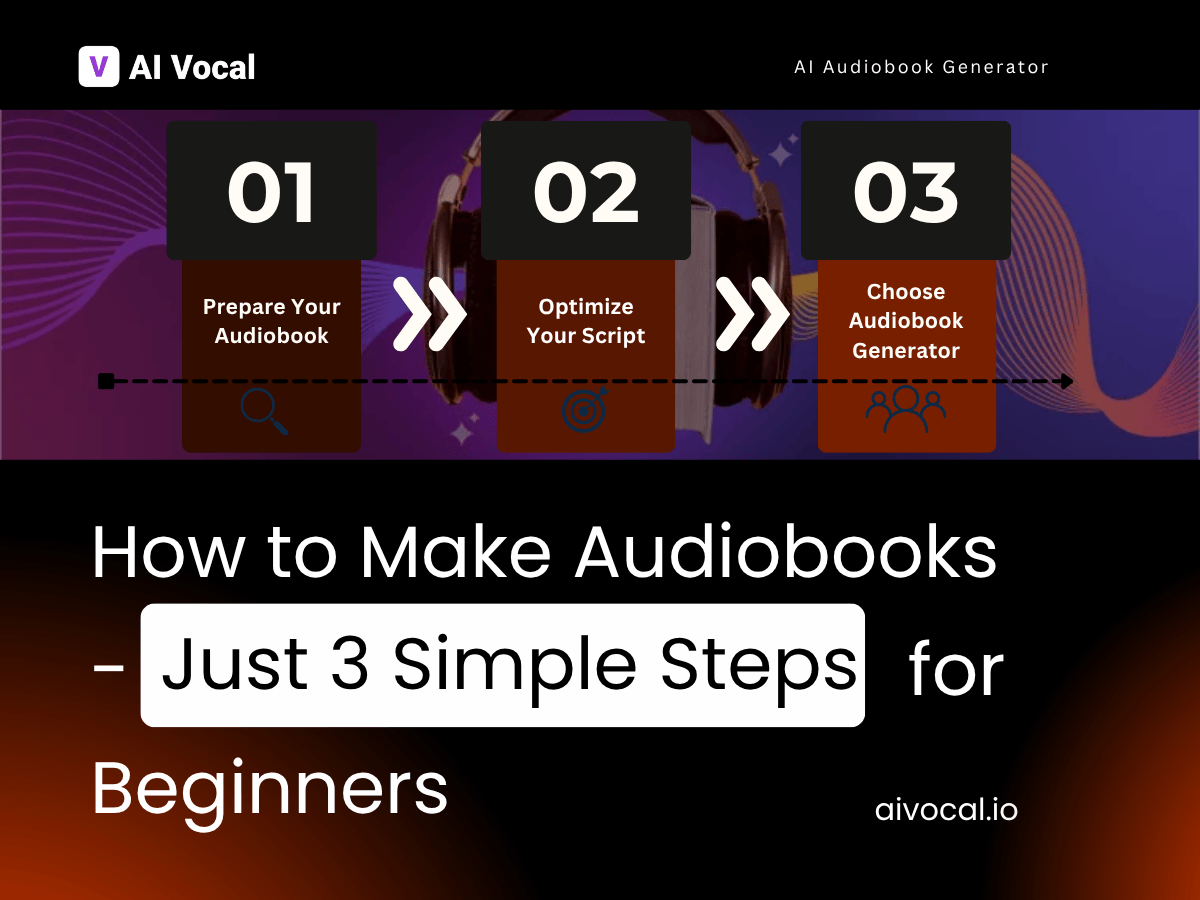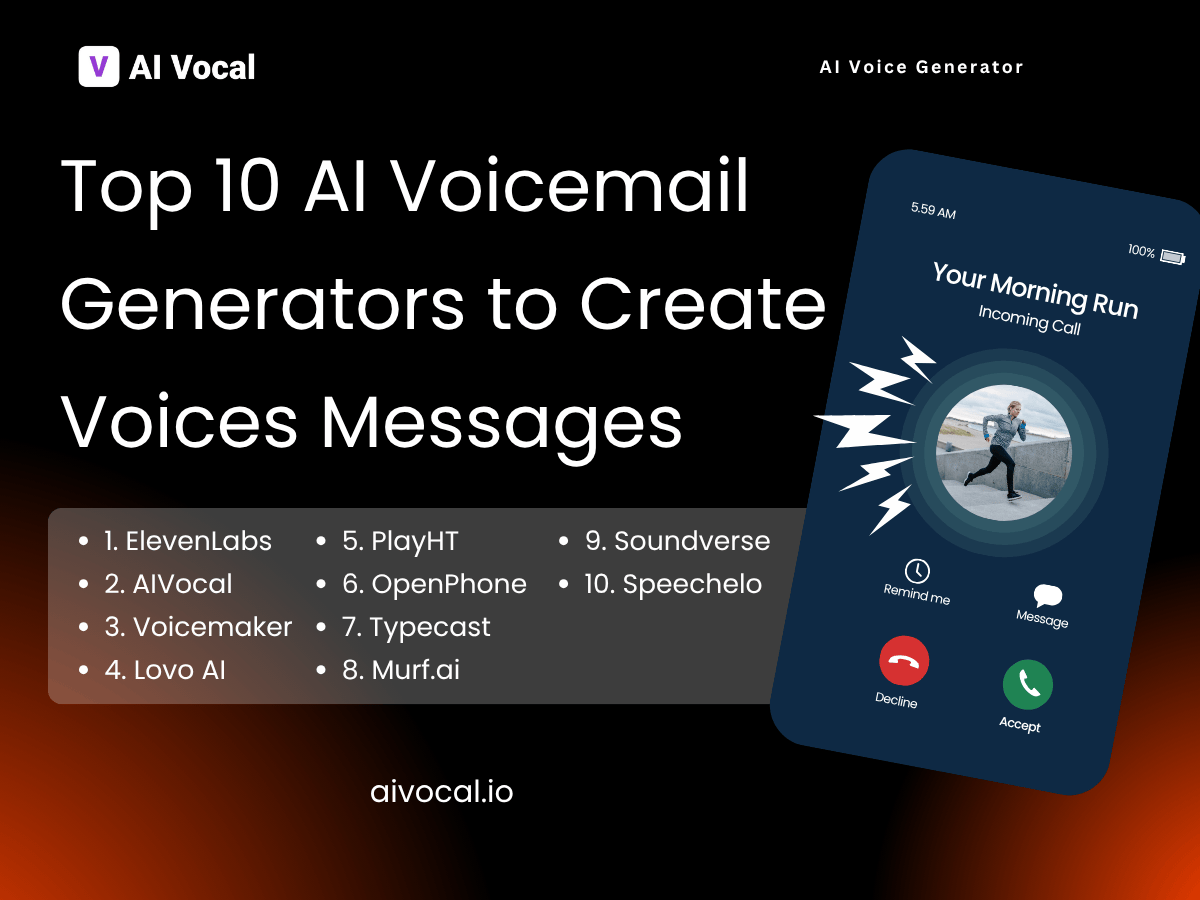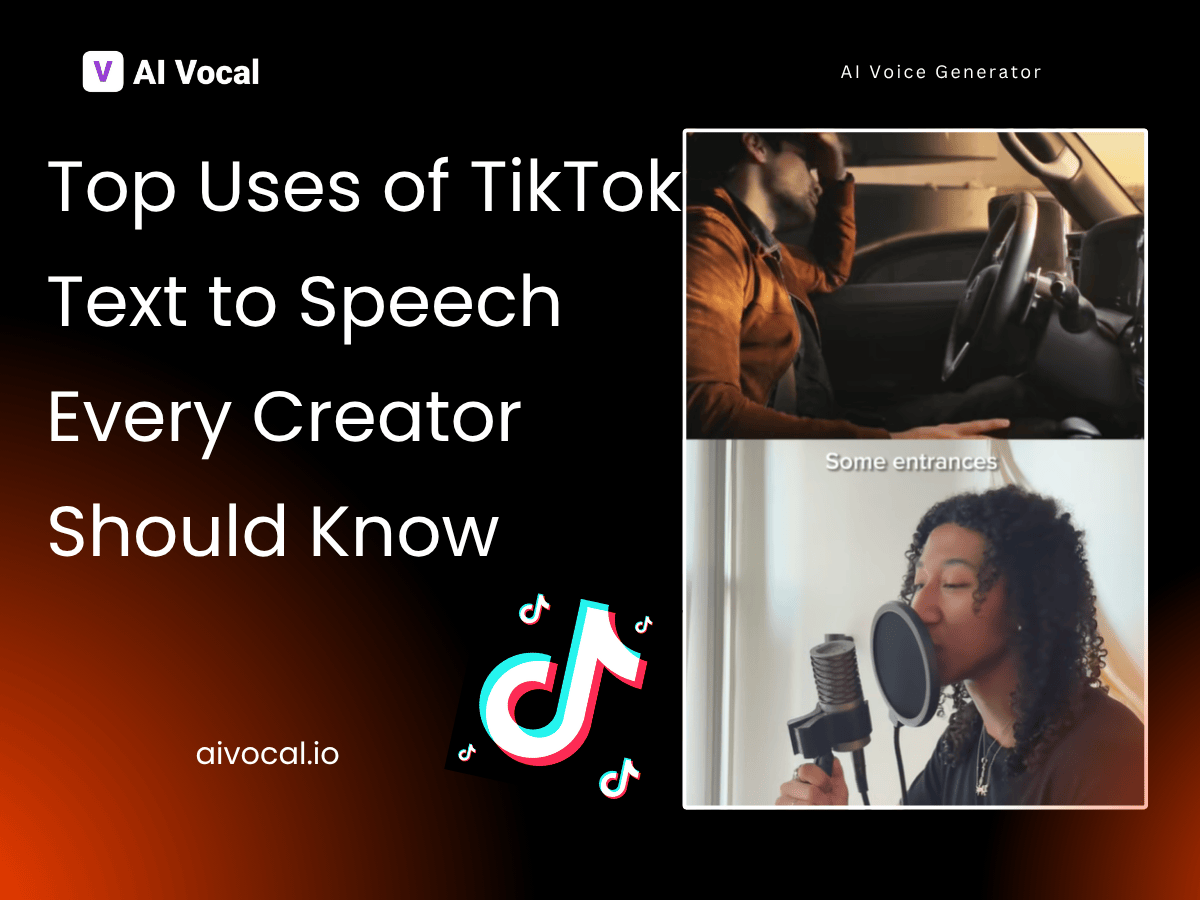How to Transcribe Voice Memos to Text – Just 3 Simple Steps
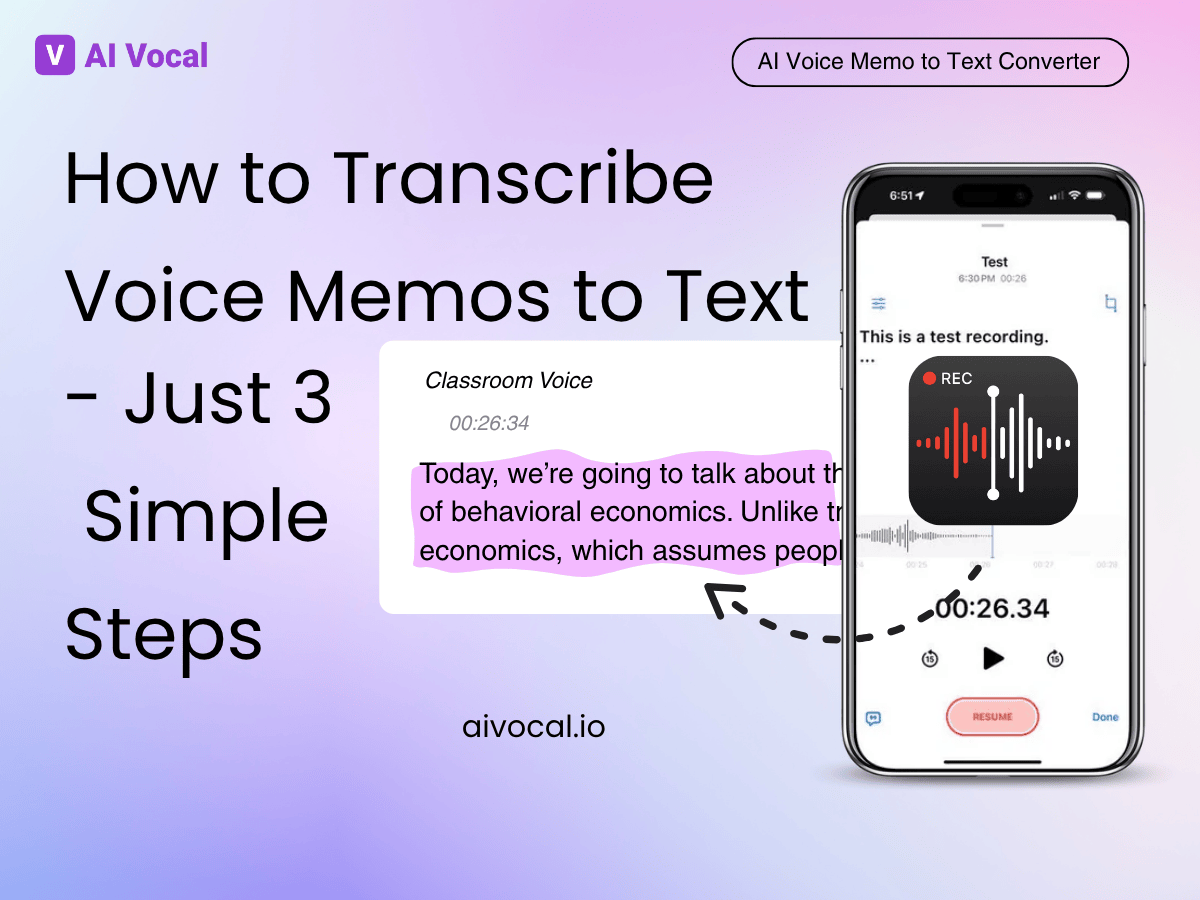
Contents
Introduction: Why You Need to Know How to Transcribe Voice Memos
Why is voice memo transcription important? In digital workflows, the demand for voice-to-text is growing at an average annual rate of 17.3% (according to Grand View Research 2023 report), and its core value lies in solving the inefficiency of audio information. According to an MIT experiment, text retrieval is 4.7 times faster than audio, which is the key reason why professionals, students and content creators need to master how to transcribe voice memos.

Taking the legal industry as an example, a survey by the American Bar Association pointed out that 85% of practitioners reduced case preparation time by more than 30% after transcribing voice memos into text. In the field of education, a 2022 study by the University of Cambridge confirmed that when students use text version of classroom recordings to review, the retention rate of knowledge points increases by 42%.
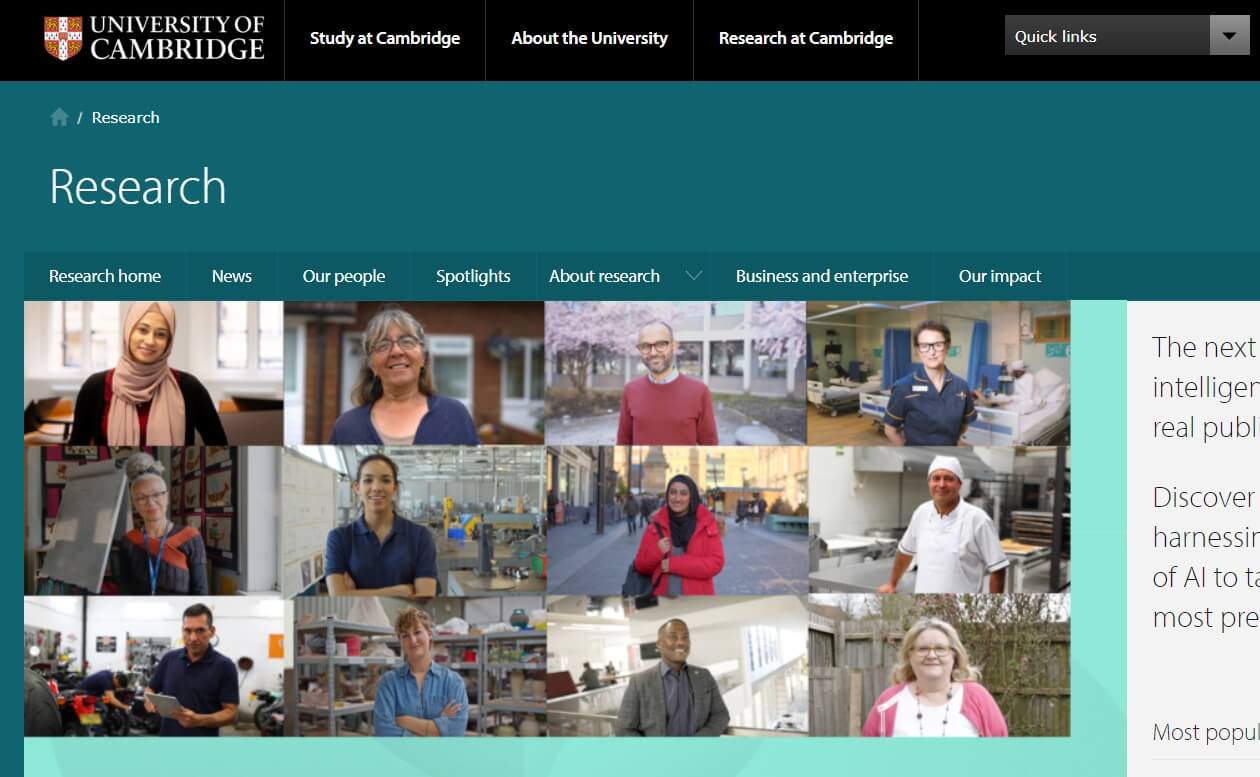
The "Just 3 Simple Steps" solution (recording-AI conversion-proofreading) proposed in this article directly responds to these needs: AI transcription tools such as Otter.ai have achieved 96% accuracy (TechCrunch 2024 test), and can restore 100% of key information with manual proofreading, making content creators 60% more efficient in making social media copywriting (HubSpot 2023 user survey).
This standardized process not only adapts to the trend of digital transformation, but also releases the potential value of voice data through structured operations.
Understanding Voice Memo Transcription Basics
Voice memo transcription is the process of converting the content of the recording into an editable and searchable text format. Its core is to convert sound wave signals into text through voice recognition technology. The working principle is divided into three key stages: audio input, voice recognition, and text output. The current mainstream transcription methods are divided into manual and automatic. Manual transcription relies on professionals to listen to the recording and record it word for word, with an accuracy rate of up to 99% but takes a long time. Automatic transcription relies on AI engines and can complete the conversion within a few minutes, with an average accuracy rate of 90-99%.
Common audio formats supported include MP3, M4A, WAV, CAF, and AIFF, of which WAV and AIFF are most conducive to speech recognition due to their uncompressed characteristics. Key factors affecting accuracy include audio quality, speaker pronunciation clarity, professional vocabulary coverage, and technical solutions. Modern speech recognition technology has evolved from early hidden Markov models to end-to-end systems based on deep learning, achieving contextual understanding through tens of thousands of hours of multilingual training data, and even automatically annotating speaker roles - this technological advancement has made voice memo transcription gradually become a basic tool for personal efficiency and organizational digital transformation.
How to Transcribe Voice Memos: Step by Step
Transcribing voice memos to text may sound complicated, but with the right tools and process, it’s surprisingly simple. Whether you're working with a quick voice note from your phone or a long recording from a meeting or lecture, turning audio into readable text can save time, boost productivity, and make your content easier to organize and share. In this section, we'll walk you through a clear, step-by-step guide to transcribe voice memos—starting from preparing your audio file, to using AI-powered tools for transcription, and finally reviewing and exporting your results. Let’s dive into the 3 simple steps.
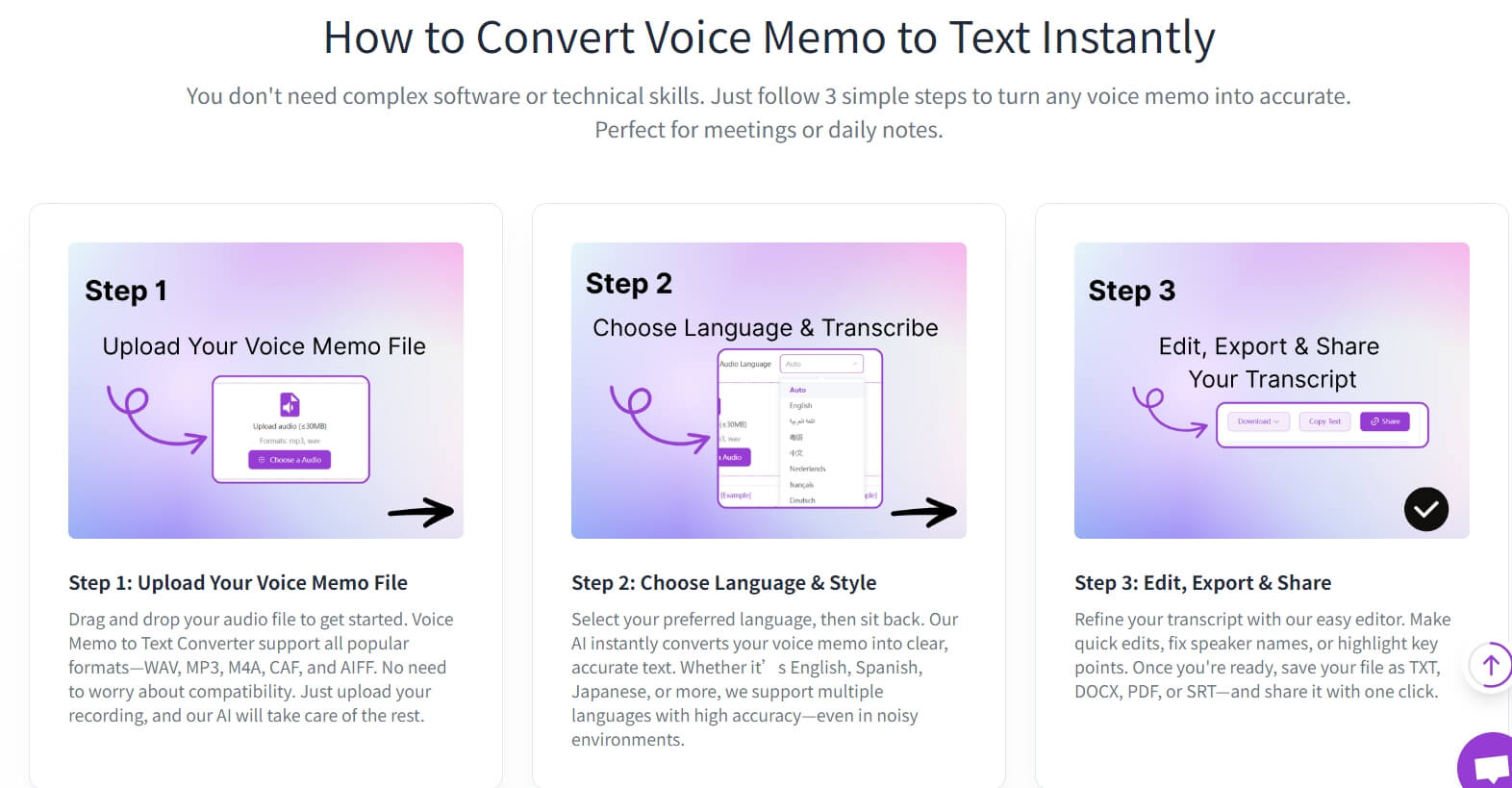
Step 1: Choose Your Voice Memo Transcription Method
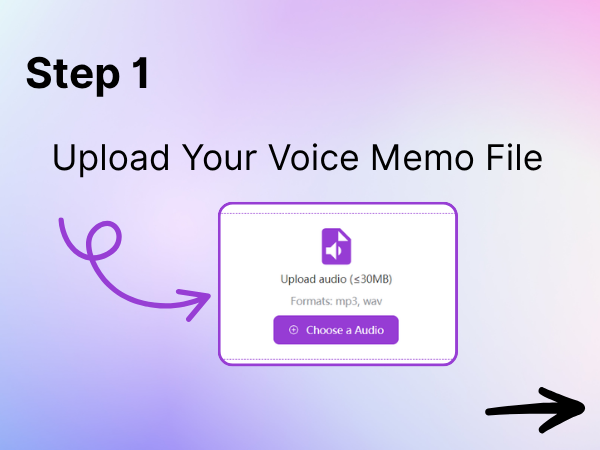
Step 1: Preparing the recording file is the key foundation for ensuring high-quality transcription results. Before transcribing a voice memo, make sure that the audio file meets the technical specifications: lossless format is preferred. If compressed format is used, the recommended bit rate is not less than 192kbps. Choose a quiet environment when recording, and using an external microphone can significantly improve the sound quality. For content recorded by smartphones, check whether it contains system interrupt sounds such as SMS alerts. Such noise will cause the AI transcription error rate to increase by 27%.
If the recording file comes from a third party, it is recommended to use tools such as Audacity or AIVocal for noise reduction preprocessing. Controlling the dynamic range between -12dB and -3dB can optimize the recognition accuracy. At the same time, confirm that the file is not protected by DRM, otherwise it needs to be converted to a universal format first. Although this step is simple, it directly affects the subsequent transcription efficiency-professional transcription service statistics show that recording files that meet the standards can reduce the post-proofreading time by more than 50%.
Step 2: Transcribe Voice Memos to Text
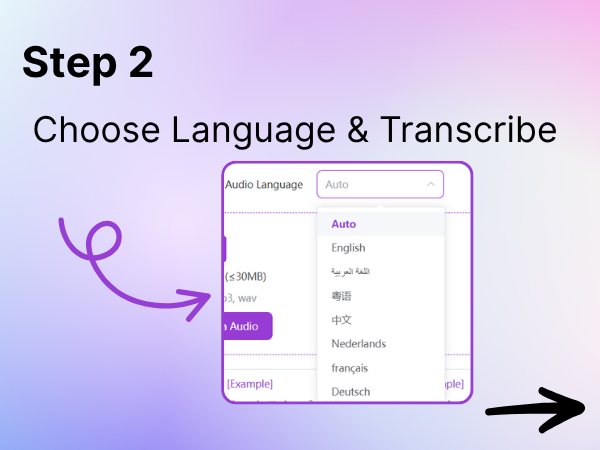
Step 2: Transcribing audio into text can be done efficiently with professional tools. It is recommended to choose the appropriate automatic transcription tool according to your needs. Recommended automatic transcription tools: Podcastle, AIVocal, Notta, Descript, SpeakWrite, Reflect, etc. The differences between these tools will be introduced in detail below. The operation process is unified and simple: import audio → select language → click transcription → AI automatically generates text.
Step 3: Review, Edit, and Export Your Transcription
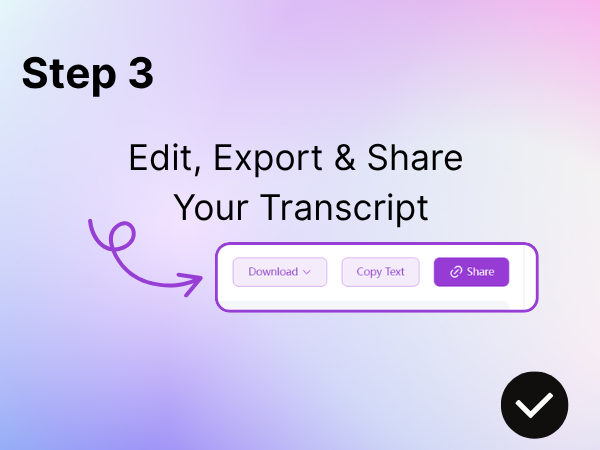
Step 3: Reviewing, editing, and exporting transcriptions are key steps to ensure the quality of the final text. After completing the automatic transcription, the content must be systematically reviewed: first check for common errors, verify the accuracy of speaker recognition, and check the synchronization of timestamps. During the editing stage, the built-in functions of the tool should be used. It is recommended to use the "listening and reading comparison method" for manual correction and supplement speaker tags. Professional users can add chapter markers and keyword tags. When exporting, choose the format according to the purpose: TXT is suitable for plain text analysis, DOC meets editable needs, PDF is suitable for legal documents, and SRT subtitle files are used for video production. Modern tools such as Otter.ai support direct synchronization to Google Drive or Notion. It is recommended to use "local storage + cloud backup" for important transcriptions, and integrate with team collaboration platforms to achieve real-time multi-person proofreading-according to Asana's 2023 survey, this workflow can speed up the delivery of transcription projects by 65%.
Top 5 Voice Memo Transcription Tools Comparison
Riverside
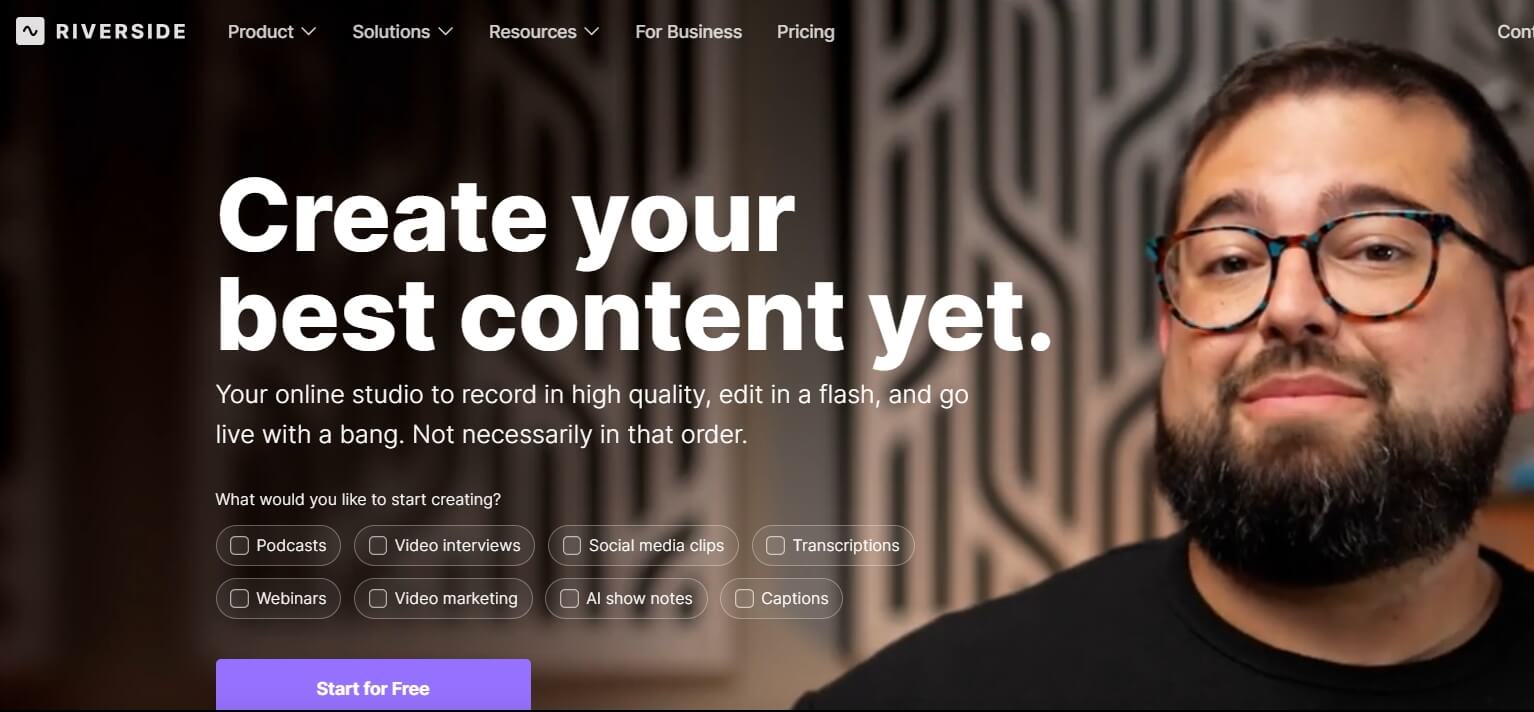
Riverside is primarily designed for podcasters, interviewers, and video content creators who need high-quality audio and video recordings. It has a professional interface that may be slightly complex for beginners but offers powerful features like remote recording, automatic transcription, and speaker track separation. The free plan is available, but advanced features start at $15/month. Its biggest strength lies in its all-in-one recording and editing environment, though it's more suited for multimedia creators than for simple voice memo transcriptions.
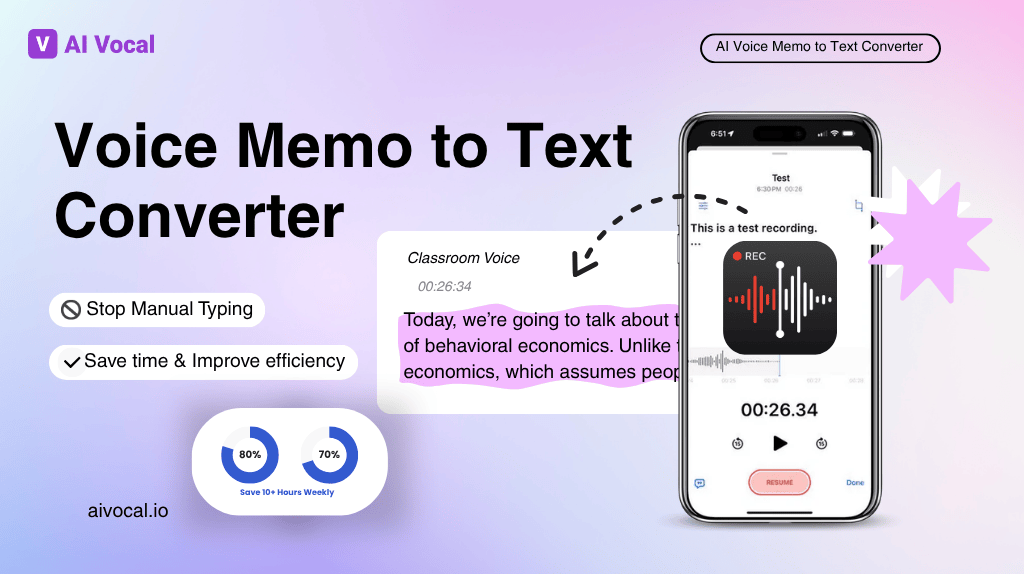
AIVocal is perfect for everyday users, students, or anyone looking to quickly convert voice memos into text without complexity. It features a minimalistic, no-login-required interface that makes it incredibly easy to use. AIVocal is currently free during its promotional period and supports multiple languages. Its strengths include speed, privacy protection, and accessibility, but it lacks advanced editing features like speaker labeling or timestamp control, making it best for quick, straightforward transcription tasks.
VOMO AI
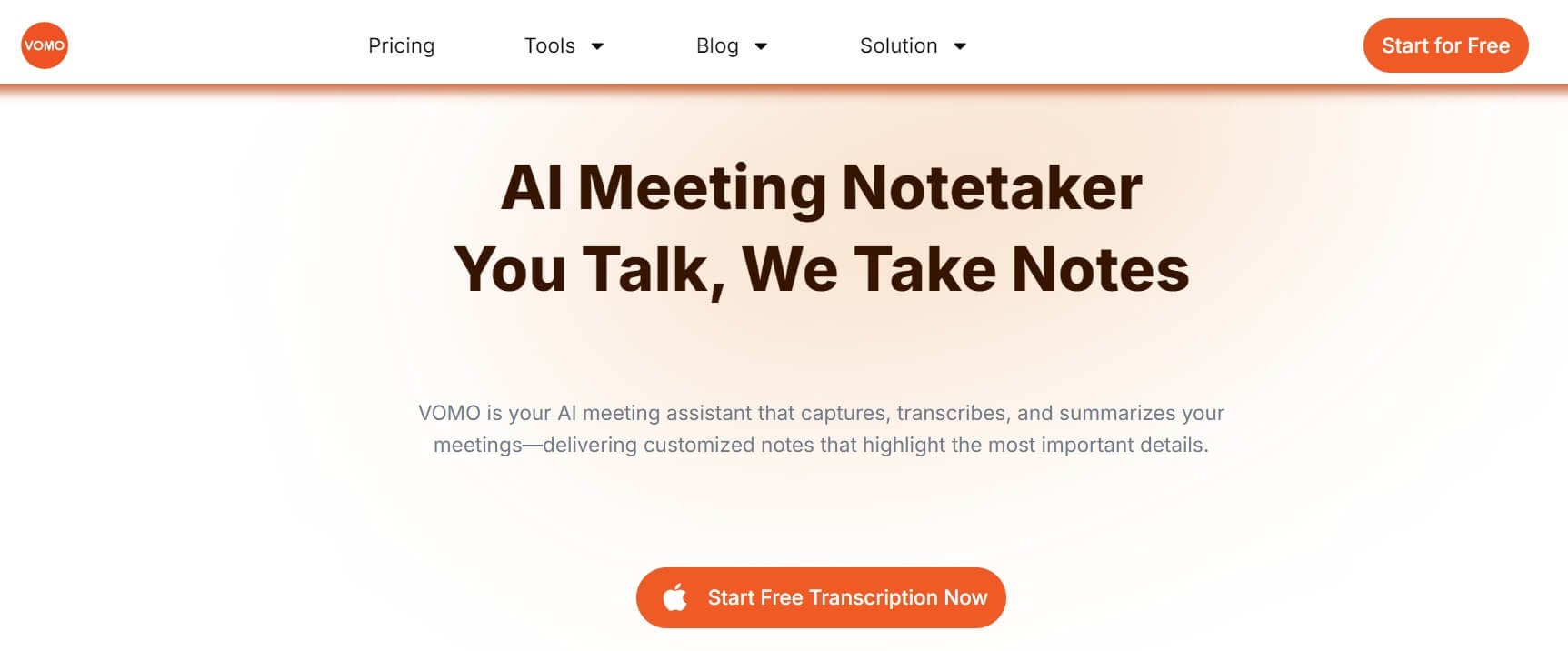
VOMO AI targets productivity-driven users such as bloggers, content curators, and professionals who need to extract key points from voice recordings. The interface is clean and easy to navigate, and it excels at generating summaries, highlights, and quick exports after transcription. While the basic features are free, more advanced tools require a paid subscription. VOMO AI’s major advantage is its ability to help users go beyond transcription by organizing and summarizing audio content, though its accuracy may vary based on audio quality.
Notta
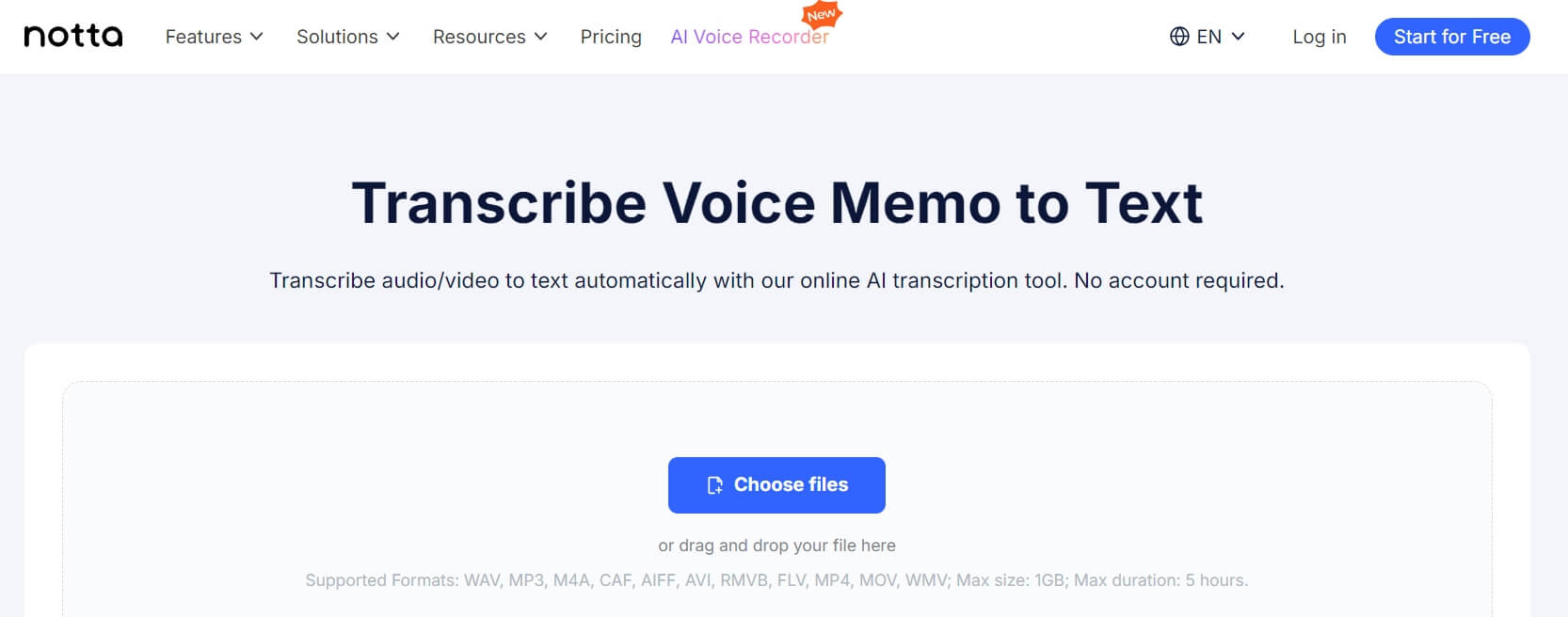
Notta is a robust transcription tool suited for educators, multilingual users, and business professionals who regularly record meetings or lectures. It’s easy to use with both web and mobile apps and supports real-time transcription, audio import, translation, and export in multiple formats like TXT, DOCX, and SRT. While it offers a free plan, it comes with limited transcription minutes, and premium plans start at $8.25/month. Notta stands out for its versatility and language support but can be restrictive for heavy users unless upgraded.
FAQs About How to Transcribe Voice Memos
Q1: Can I transcribe voice memos for free?
A1: Yes, several tools offer free voice memo transcription including Notta (3-minute limit), built-in iPhone features, and TalkNotes (5MB limit). Premium services provide unlimited transcription and higher accuracy.
Q2: How accurate is voice memo transcription?
A2: Accuracy ranges from 85-98.86% depending on the tool and audio quality. Notta offers up to 98.86% accuracy for high-quality recordings, while Speechnotes achieves 95% accuracy.
Q3: What file formats are supported for voice memo transcription?
A3: Most tools support MP3, M4A, WAV, CAF, and AIFF formats. Some platforms also accept video files with audio tracks.
Q4: Can voice memo transcription identify multiple speakers?
A4: Advanced tools like Podcastle and VOMO AI offer speaker identification and labeling features, while basic tools may require manual speaker tagging.
Q5: How long does voice memo transcription take?
A5: Processing time varies from real-time to several minutes depending on file length and service. Most online tools process audio faster than real-time playback.
Q6: Is voice memo transcription secure and private?
A6: Reputable services use encryption and secure servers. Check privacy policies and consider local processing options for sensitive content.
Q7: Can I edit transcribed voice memos?
A7: Most transcription tools include built-in editors for corrections, formatting, and adding timestamps or speaker labels.
Q8: Do voice memo transcription tools work offline?
A8: Most services require internet connection, though some mobile apps offer limited offline capabilities.
Conclusion
Transcribing voice memos to text doesn’t have to be complicated or time-consuming. Whether you're capturing ideas on the go, documenting meetings, or creating content, turning your voice recordings into written text can significantly improve your workflow, accessibility, and productivity. By understanding the basics of voice memo transcription and following the three simple steps—choosing the right method, transcribing, and then reviewing and exporting—you can streamline the entire process. With tools like AIVocal, VOMO AI, Notta, Riverside, and Descript, there’s a solution for every need and skill level, from casual users to professionals. Now that you know how to transcribe voice memos efficiently, you’re just a few clicks away from transforming your audio into clear, actionable text.
